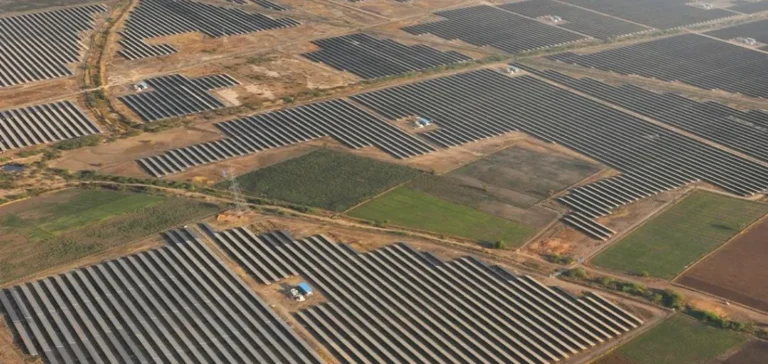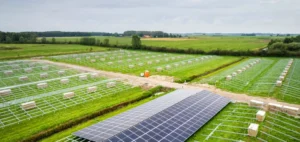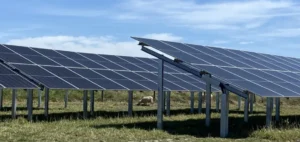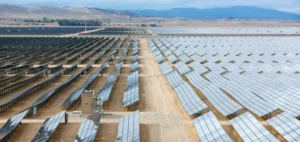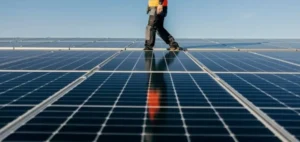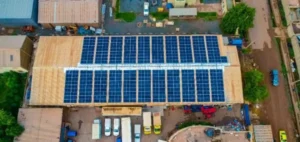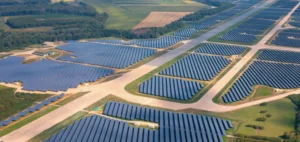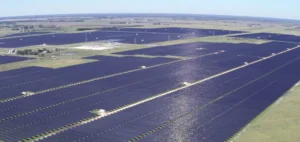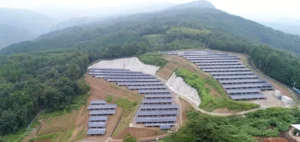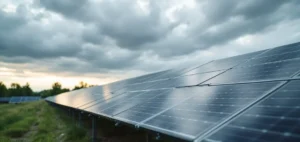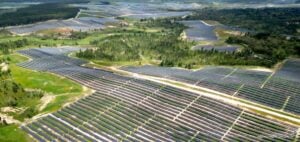India is approaching a critical juncture in its solar industry, with photovoltaic module manufacturing capacity projected to exceed 125 gigawatts by the end of 2025, while domestic demand remains around 40 gigawatts. This rapid expansion, supported by the government’s Production Linked Incentive (PLI) scheme, has led to a stockpile of 29 gigawatts of unsold modules by the third quarter of 2025.
US slowdown hampers export ambitions
This mismatch between production and consumption comes as India’s primary export market, the United States, experiences a significant decline. New reciprocal tariffs of 50% imposed by Washington have caused Indian solar module exports to the US to fall by 52% in the first half of 2025 compared to the same period in 2024. In response, several Indian manufacturers have suspended US factory projects to refocus on the domestic market.
The Head of Solar Supply Chain Research at Wood Mackenzie stated, “The PLI scheme has effectively spurred factory announcements, but signs of rapid overcapacity mirror conditions that preceded China’s price collapse.” She added that the key challenge has shifted to achieving cost competitiveness and diversifying export markets.
Cost remains a barrier to competitiveness
According to Wood Mackenzie, an Indian-assembled module using imported cells costs at least $0.03/W more than a fully Chinese-made module. A module fully manufactured in India, in line with domestic content requirements, would cost more than twice as much as its Chinese counterpart. This disparity threatens India’s competitiveness without substantial public policy support.
To bridge these gaps, Indian authorities have implemented several protective measures, including the Approved List of Models and Manufacturers (ALMM) and a recommended 30% anti-dumping duty on Chinese cells and modules. These mechanisms aim to shield domestic producers during this crucial transition phase.
Future hinges on innovation and diversification
Despite current headwinds, analysts view India as holding the most tangible potential to challenge China’s dominance in the global solar supply chain. However, with national capacity far exceeding the protected market size of 40 gigawatts, manufacturers must move beyond government protection to ensure sustainable growth.
The same analyst stated that current difficulties should be seen as a roadmap: the focus must now shift to technological innovation, research and development, and opening new export markets in Africa, Latin America, and Europe.


